Pinterest has experienced tremendous growth in 2020, nearly doubling its users! One of the fastest-growing demographics is international users. As a US-based company, it is important not to have tunnel vision but to see the big picture of Pinterest marketing beyond the U.S.
This month, we are talking all about Pinterest marketing beyond the U.S. and ways to market as an international business and to Pinterest users in your home country.
Today we are talking with Sanne Raaimakers-Boons of Socially Sanne. Sanne lives in Europe so we really wanted to hear her perspective on what it’s like to market in the Netherlands using Pinterest and what her experience has been with educating her clients about Pinterest marketing.
There are some really good “Aha” moments in this episode, where Sanne answers questions that many people have been asking us for years.
Questions such as:
• What language do I use?
• Should I use the same language on boards?
• Should I create a separate English-speaking board and a home country language board?
We really delve deep into those questions to get you the answers you need. We’re going to spend the next four weeks talking specifically about international topics because that is the fastest-growing segment on Pinterest.
Pinterest marketing can be a bit frustrating for international users because they don’t have access to the same tools many of us in the States have on the platform. I’m excited to hear the stories from people who are forging ahead with Pinterest marketing in different countries and share their current challenges, opportunities, and takeaways with you over the coming weeks.
Let’s Get Started!
Perspectives from a Netherlands-Based Pinterest Marketing Consultant
Sanne is the owner of Socially Sanne, a small business in a very small village in the Netherlands. She teaches mainly female entrepreneurs about Pinterest marketing.
Sanne ‘s background includes a corporate career in social media marketing where the main focus was on Facebook marketing. She started using Pinterest personally around 2012. In 2018, she started her own business and began focusing on Pinterest marketing right away because she could see the potential in the platform.
Pinterest marketing has really started growing in the Netherlands, especially last year. Businesses have begun using it in very strategic ways. Sanne’s clients are mainly small business owners, so she spends a lot of time educating them on why small businesses should use Pinterest in their marketing strategy.
Sanne still encounters quite a bit of doubt in the Netherlands about Pinterest’s utility as a viable marketing platform. People still think of it as a place to gather recipes or interior design ideas. She finds that many entrepreneurs are really focused on Instagram as their primary business platform. Sanne’s goal is to show them how they can really use Pinterest to grow their business in a less time-consuming way relative to Instagram.
Related: Is Pinterest Social Media?
Sanne sees a future of much more growth for Pinterest in the Netherlands, especially as people become convinced of the strength of this platform.
The Challenges of Pinterest Marketing Beyond the U.S.
The Language Choice Dilemma
Sanne’s clients are all Dutch-speaking. She has quite a mix of clients from the Netherlands and from Belgium. They see a lot of Dutch content on their Pinterest feed, but they also see a lot of foreign content as well.
When people in the international market are searching on Pinterest, they find that the marketing terms are often in English. It can be difficult to find what you are looking for (e.g., searching for a “health coach”, a term that doesn’t exist in Dutch). Many bloggers in the Netherlands are using words they would use in the Netherlands or the Dutch words. They constantly struggle with the question of which language to use for keywording pin images and pin descriptions.
According to Sanne, it is difficult to answer the question because you need to focus mainly on the words you use in the Netherlands or Dutch words to get your content in front of the eyes of your direct audience — the Dutch people. The struggle is getting your content in front of the eyes of non-Dutch people as well.
There’s always the U.S./Canadian audience to consider. In the Netherlands, they are quite used to using English words because they use many in their vocabulary. But writing exclusively in English makes it quite challenging to reach the Dutch people.
Challenges Unique to International Food and Recipe Creators
People who are food or recipe creators can really show their recipes to anybody in the world. They often come to Simple Pin and ask questions like,
Should I write my recipe in my home country language?
Should I have both English-speaking boards and Dutch-speaking boards for pinning the recipe?
Should I just use my native language and then let Google translate for whoever needs it?
These are the same questions that people ask Sanne in the Netherlands. She always advises her clients to look at the end goal they have in mind.
Think about who you are targeting on your website and what language you use for that purpose. If your main audience is Dutch, then use Dutch. Use Dutch keywords, Dutch board titles, etc. to get the algorithm to work as effectively as possible for your content.
But…this is tricky.
For example, when you have an apple pie recipe on your Dutch website and it’s in Dutch, you use the keyword appeltaart. You will attract Dutch people to the post using that keyword. But, when you use the English keyword apple pie, your potential audience will be much larger.
By targeting the keyword apple pie, a lot of non-Dutch speaking people will click over to the post. But then they get referred to your website and they get a Dutch recipe. Herein lies the problem. The best advice Sanne offers is to keep your main end-user in mind and keep everything consistent with the language you use on your website.
The language issue is especially important for recipes.
Recipe information is very specific. When a recipe is translated by Google, key details regarding the recipe might get lost in translation (never a good thing). If you’re in the Netherlands and you try to search for English recipes, the measurements are different. Dutch people do not use measurements like cups or inches, for example.
Sticking with your own language, or at least the language you use on your platform is best for user experience. Whatever language you use, try to use several different ways to explain how much of an ingredient is needed. This might mitigate any potential translation issues for users outside of your market.
The takeaway?
If you want to get exposure in your home country, then you need to make sure that you are using the native language for that country.
Whoever is coming to your website is likely going to want to read in that language. So, putting two and two together, it makes sense to use the language of the specific country you are really targeting and consider explaining your content in multiple ways to assist the non-native readers. Then if somebody speaking a different language does come across your website, and they really want that recipe, Google can translate the post for them.
If you decide you want to expand your marketing and really try to get more reach globally, then you’ll need to consider using the other languages of the people you want to interact with.
Lack of Access to New Pinterest Features for International Users
Many international markets are not first in line to get new Pinterest features. Story pins are one example. Sanne has been waiting for them for months, but they are not yet available in the Netherlands. Just recently they’ve become available for some larger accounts. But for small accounts (like her clients), they haven’t been released yet.
As a marketer, this can be really frustrating. Story pins on Pinterest are performing like gangbusters. A lot of people are sharing the great results they get with story pins and the international marketers are chomping at the bit to get access to them.
As U.S.-based creators, we also get to look into Pinterest’s newsroom to see what Pinterest is putting out and when to expect it. There is also the Pinterest Creators Festival. We have opportunities to really stay on top of what’s happening.
An equivalent source of information or community for creators in northern Europe (to learn about new developments on the horizon for the European-based Pinterest platform) does not appear to not exist. If it does, it is difficult to find.
At Simple Pin, closely follow what features Pinterest is releasing globally. Rolling out key new features will play a big role in how the platform continues to be sustainable. It will be part of how they get people in other countries to begin to adopt the platform as a marketing vehicle for their business.
It’s very similar to what we’ve seen happen with Instagram.
We see Pinterest positioned really well for all countries because they are creating a place where people can search for information on their interests using pictures and then save that information for later. The appeal of the visual platform is something that spans all countries. We all have an innate desire to save valuable information to reference in the future.
Pinterest Advertising on the International Market
Pinterest ads are available in the Netherlands. Sanne has only dabbled in promoted pins, however, because she found the ads setup process to be overwhelming. She feels most comfortable with Facebook ads. The platforms are so very different that she found it difficult to set up ads on Pinterest.
Related: The Transition from Facebook Marketing to Pinterest Marketing
Getting into the advertising end of Pinterest requires time and effort. You need to understand it, really have a good Pinterest ads budget and enough time set aside to spend with the platform so that you can really learn from what you are doing in order to optimize the results. Many companies are achieving great results, but you have to be ready to devote some time to understand the process.
Pinterest advertising is really beginning to grow in the Netherlands. People are seeing ratios as much as 1:3 or 1:4 ads to organic pins in their home feeds.
If you are interested in the Pinterest ads market, it could be really interesting to look at what the ads are targeting. Are they trying to get exposure and get their name out or are they really targeted toward action?
Simple Pin is looking at those questions a bit more deeply. Facebook users seem primed and ready to buy. There are not a lot of barriers there. But when it comes to Pinterest, there seem to be big hurdles that are in the way of getting people to purchase.
Try looking at ads from a new angle as Pinterest grows.
Spend time in your main feed looking at the advertisers popping up. Consider why they are targeting you and what they want you to do when you see their ad. Look specifically at how it pertains to product sellers that have a physical product vs. people that sell a digital product, PDF, or an opt-in. Look at what advertisers are doing in your market, such as in the Netherlands.
If you can get an idea of what the advertiser’s goal is, then you might take one of your clients and try to take them in the same direction that some of the larger companies are headed. Try to mimic what they are doing, keeping the same goal in mind, and see what the conversions look like.
Pinterest serves the role of being the informer of the great idea but not necessarily the place where someone takes action on that good idea. This differs from Facebook because there, people will take action.
The conversion piece is probably the biggest hurdle in Pinterest advertising.
It will be very interesting to follow up in six months to see what Pinterest advertisers are doing in the Netherlands or international market vs. what we’re seeing in the U.S.

Convincing International Users That Pinterest Marketing Works
Sanne offers this advice for educating international marketers of the benefits of marketing on Pinterest.
Begin by asking potential clients about their funnel.
- What kind of platforms are they using now?
- How much time do they take?
- What kind of results do they really bring?
Potential clients are busy entrepreneurs. They want to make the best use of their time. Take time to explain what Pinterest can do for them, keeping their end goal in mind. Find out what they are looking for:
- greater brand awareness?
- more leads?
- more people to their website?
Explain the role that Pinterest can play relative to other platforms such as Instagram.
Sanne really likes to compare the time they will spend on Instagram vs. the time on Pinterest for her potential clients. She emphasizes the lifespan of content on the Pinterest platform relative to other social media platforms. This selling point is what usually convinces a potential client to give Pinterest marketing a try.
Sanne also emphasizes to her clients that Pinterest is just one component of a larger marketing strategy. She believes that optimizing a client’s website is also a critical factor for success.
The hope is that once clients learn about the power of the Pinterest platform, their response will be “Sign me up! Let’s do it!”
Thanks to Sanne for sharing her perspective on Pinterest marketing beyond the U.S. You can learn more about Sanne, at Socially Sanne. Follow her on both Pinterest and Instagram. She also hosts the Socially Sanne podcast for any Dutch listeners interested in Pinterest marketing.
For Further Listening/Reading:

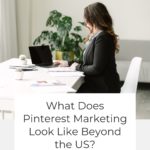
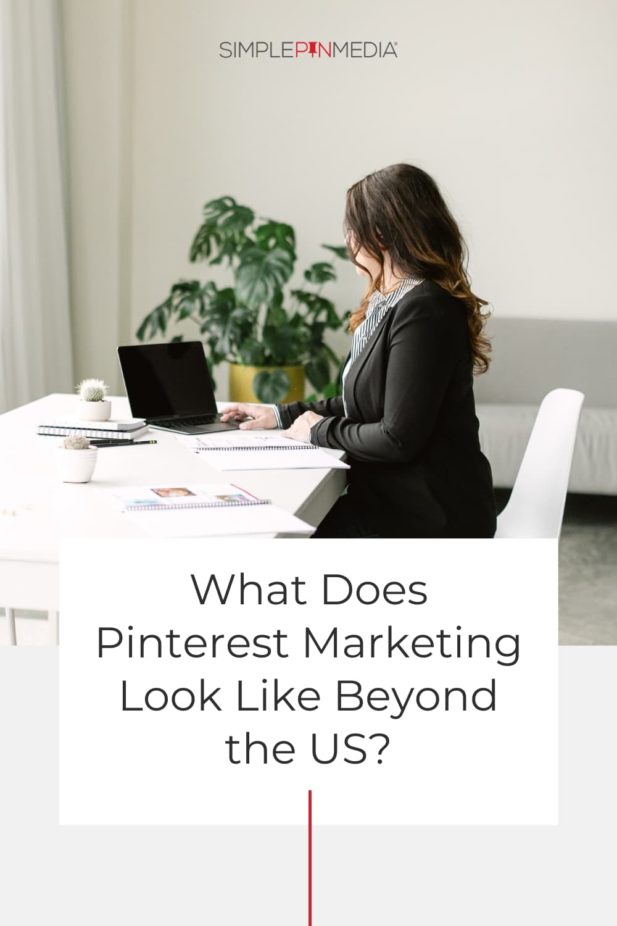




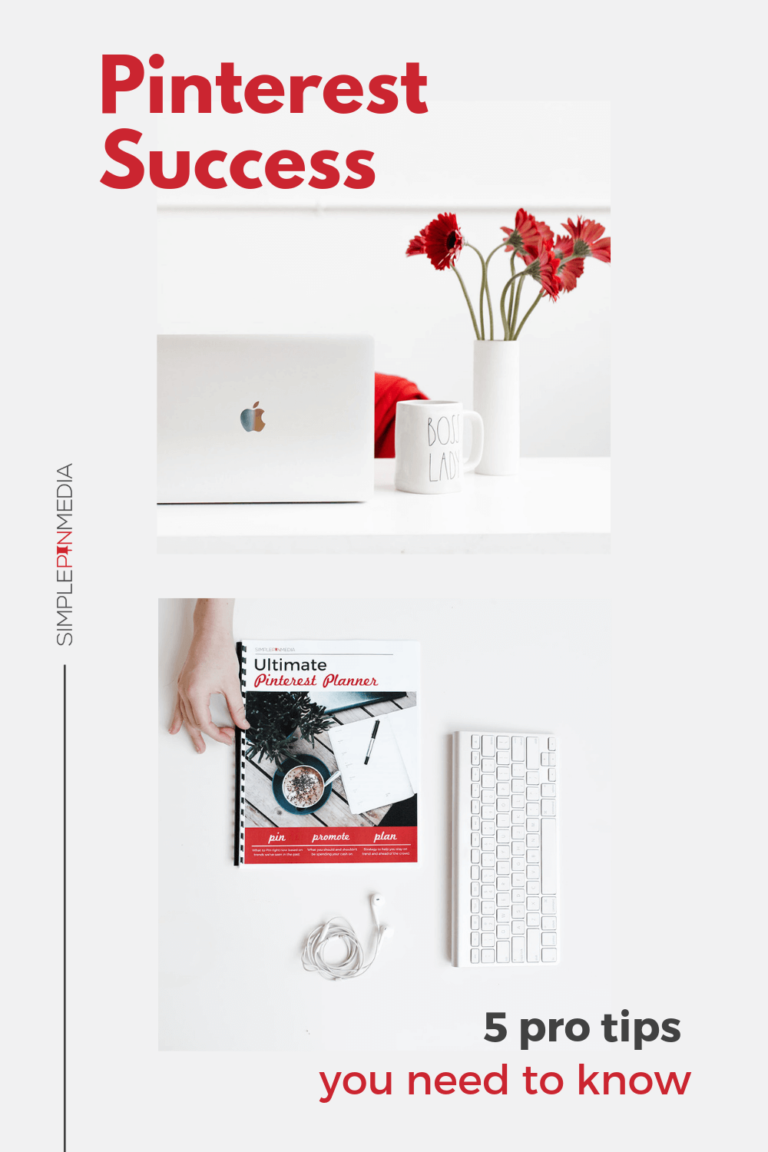
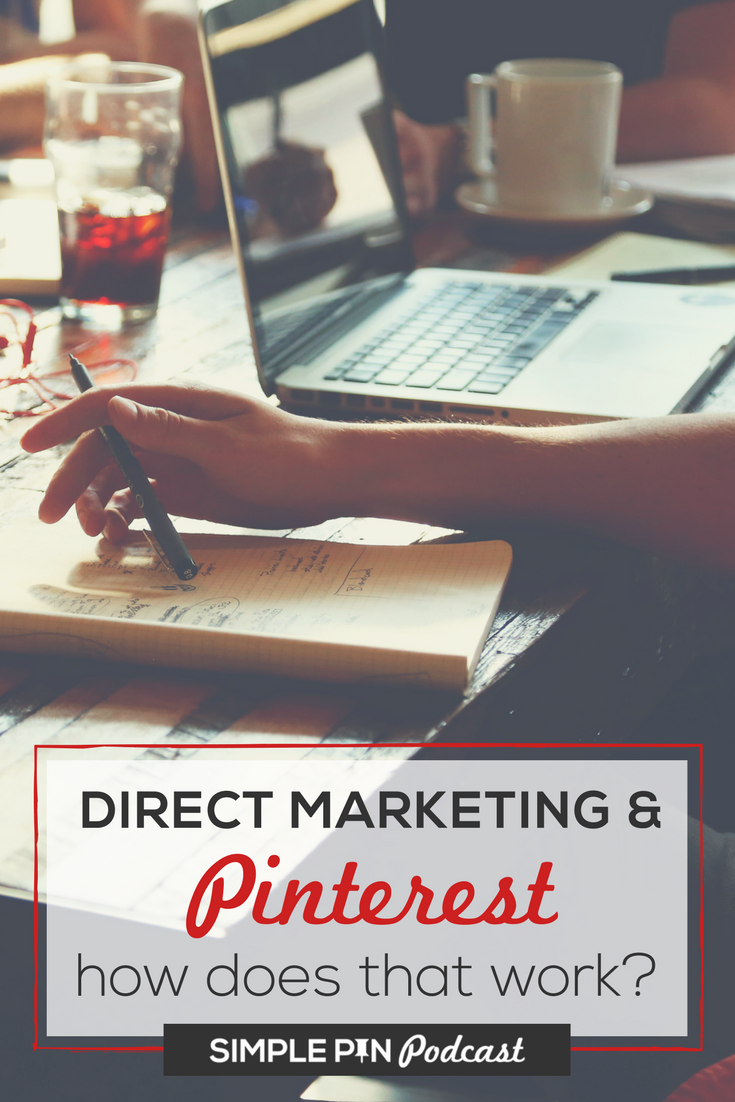
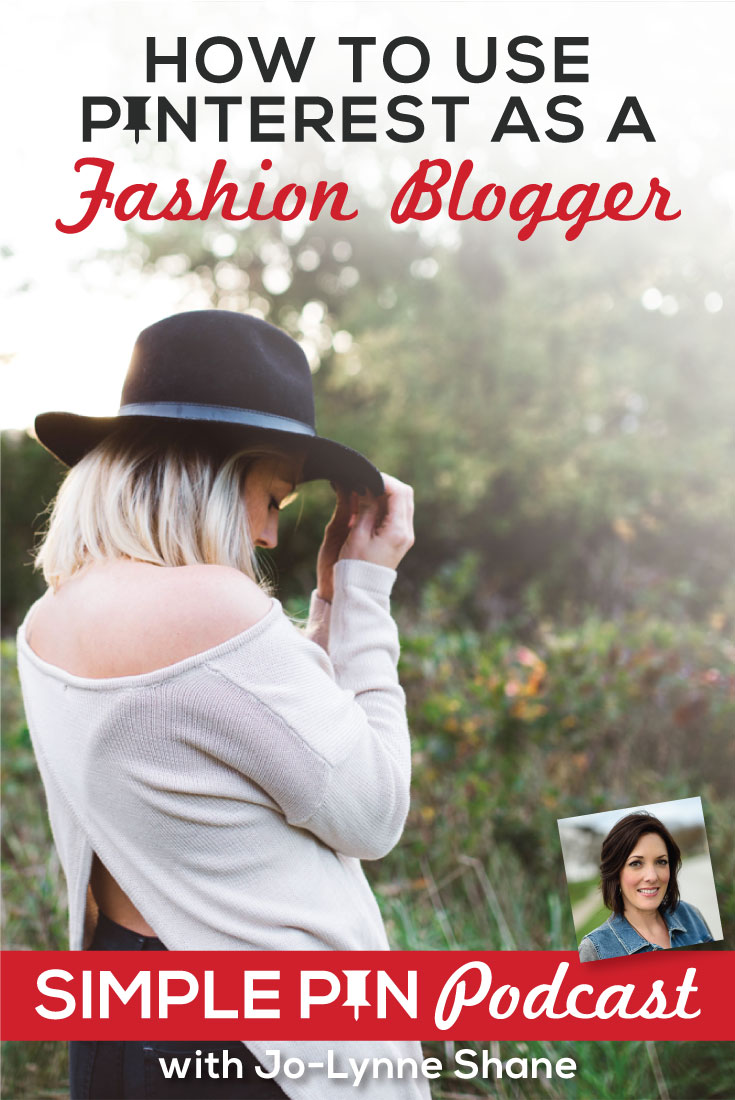

I’m so happy your doing this! I currently have been working with a client in Dubai, UAE who sells online beautiful custom made metal decorative screens. They reached out to me for help because they heard that Pinterest is place they should be but nobody in the UAE is really using it to their full advantage even though there is apparently around 2 million users from the country on Pinterest. They were not sure if they should really try it.
We talked quite a bit about many of things mentioned here in this article (longevity, part of a bigger marketing strategy etc) and they agreed to move forward. I’m on month # 4 and to be honest it is a slow process, especially since their budget for advertising is non existant right now. They really just want to focus on the organic side of the pinterest marketing. So I have been doing what I can with the lack of tools that I have here in Canada (Gosh I would give ANYTHING to have story pins in the UAE!).
My client is happy with what they are seeing (again they are in it for the long game) but I would be more happy with my progress if the tools were supplied to all countries. I would 100% agree that it would help grow the platform to larger levels. We shall see!
I can’t wait to read about what others are doing next.
Thanks!
Thanks for sharing your experiences with Pinterest marketing on the international front. You are exactly the reason we are pursuing this series 🙂
Without question, there are numerous challenges that come with marketing beyond the U.S., especially on social media platforms people use on a regular basis like Pinterest. This is good insight to have, though!
So glad you found this podcast useful!
Hi Kate,
So if I want to attract both English speakers and Spanish speakers to my board should I create 2 language versions for each pin?
Thank you 🙂
Yes. If your audience is split between the two, then creating pins for each language will be the best. In time you may see one language gaining more traffic for you and then you can lean into that one more.
Hi there,
If you are a global brand, would you recommend having seperate boards dedicated to seperate regions? E.g. something culturally / seasonally relevant to the UK like ‘winter warmer recipes’ and then something for Australia such as ‘Aussie BBQ Summer snacks’?
or is it better to create two completely seperate pinterest accounts for the different locations under the same brand/company.
We have some products which are only relevant to UK and vice versa with Australia.
Thank you!
Hi Kay!
Separate boards for those regional topics will work great – there’s no need to create separate accounts for each location. 🙂